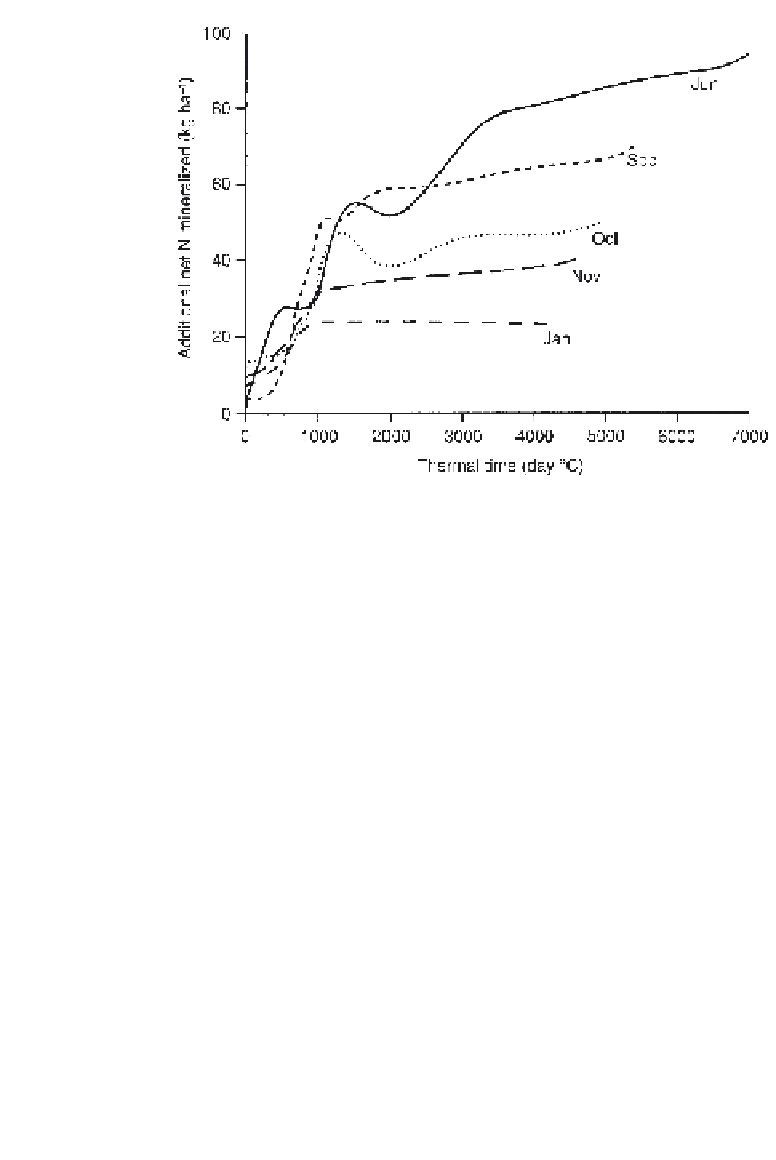Agriculture Reference
In-Depth Information
Fig. 3.4.1.
Calculated additional net N mineralized from residues incorporated on different dates.
These data were smoothed with a least squares cubic technique (Steinier et al., 1972) applied with
a 15-point window and three passes using Fig-P software (Biosoft, Cambridge). 'Thermal time' is
the accumulated day degrees (above 0
°
C).
The effect of residue incorporation on SMN was observed for up to
18 months. The residue incorporation date affected the total N release
(Fig. 3.4.1), calculated as the change in the total of mineral forms of N
(essentially SMN plus leached NO
3
−
-N) over the period of the experiment.
Significant N loss by denitrification seems unlikely from the loamy sand
soil; alternatively, mineralized N may have been re-immobilized rapidly.
However, this result has important implications for N cycling simulation
models; and also implications for fertilizer N recommendations which
currently assume a fixed N supply irrespective of incorporation date.
Method of incorporation
The method of incorporation had no differential effect on leaching (154
and 161 kg N ha
−1
for shallow cultivation and plough, respectively, as an
average of three cultivation dates). The results from other workers indicate
that the decomposition of added plant material is more rapid in sandy
than in more clay-rich soils under undisturbed conditions, whereas the
reverse is true under conventional cultivation (Silgram and Shepherd,
1999). However, since mineralization is greater following cultivation, this











Search WWH ::

Custom Search